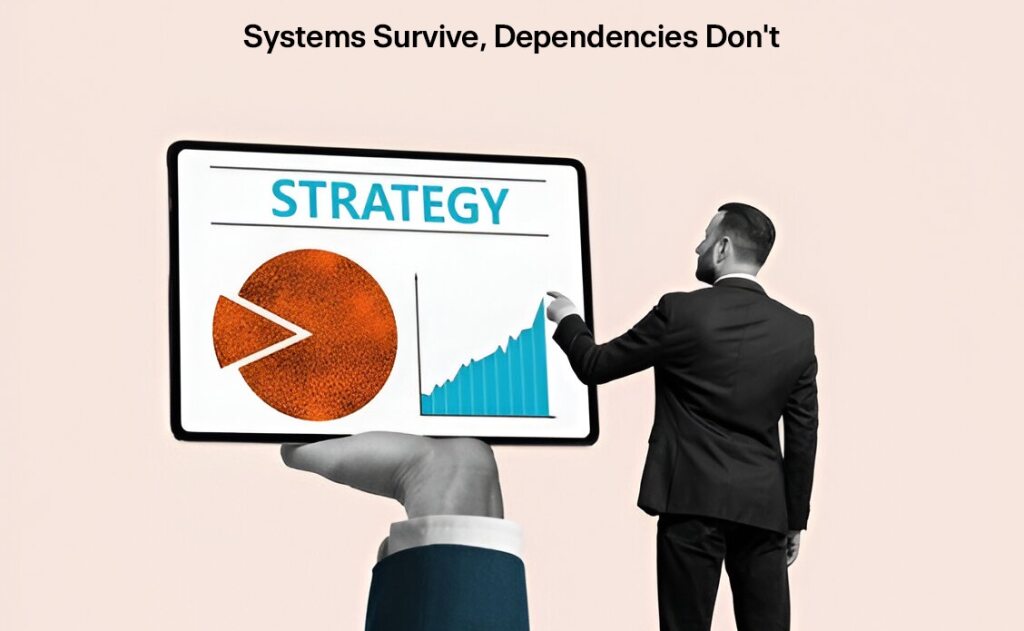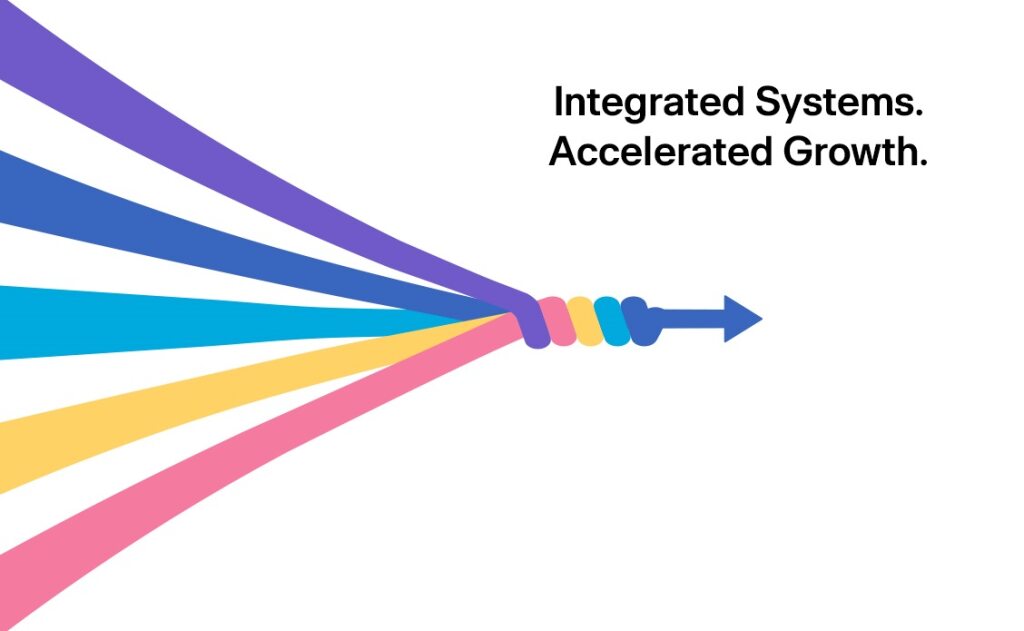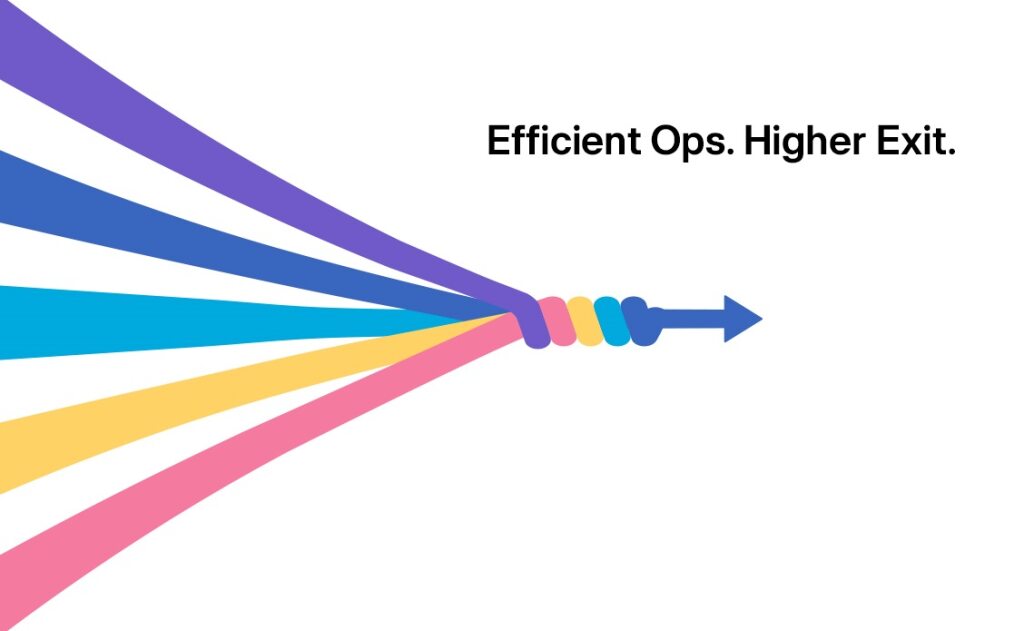The $2.8M Single Point of Failure:
Two months ago, I got an emergency call from a portfolio company CEO. “Sarah, our head of operations, just gave notice. She’s the only person who knows how to run our month-end close, customer onboarding, and vendor payments. We might miss our board meeting financials.”
The panic was palpable. A $50M revenue company held hostage by one person’s institutional knowledge. Their growth had created a spider web of manual processes that only Sarah understood. No documentation, no systems, no backup plans.
This wasn’t a people problem—it was a digitization problem. They’d built their growth on human expertise instead of scalable systems. Every critical process lived in someone’s head, making their entire operation vulnerable to inevitable team changes.
The terrifying reality: $2.8M in revenue at risk because they’d chosen manual convenience over digital resilience. Their fastest-growing competitors had systematized what this founder was personalizing.
The disconnect? They built human dependencies instead of digital reliability. Companies that scale through people-dependent processes don’t scale—they create expensive, fragile operations that break when key people leave.
At NextAccel, we’ve diagnosed operational risk across 200+ scaling companies. The pattern is consistent: founders who confuse personal expertise with business capability create single points of failure that threaten sustainable growth.
Systems Survive, Dependencies Don’t
Image idea: A visual showing business resilience comparison. Left side: fragile structure built on human figures as pillars, with cracks showing when people are removed. Right side: robust digital infrastructure with automated processes flowing seamlessly, unaffected by personnel changes.
Here’s the NextAccel framework for building digital resilience that eliminates operational risk.
Step 1: Reverse-Engineer Your Dependency Vulnerabilities (DEFINE Your Risk Exposure)
Ask your leadership team this diagnostic question:
“If any single employee left tomorrow, which business processes would stop functioning? If the answer includes revenue-critical operations, you’re running a people-dependent business, not a systematized company.”
Most digitization fails because teams confuse process documentation with process systematization. Your digitization stack isn’t “everything we can document”—it’s “the critical workflows that must function independently of specific individuals.”
The NextAccel DEFINE Framework for Dependency Intelligence:
- Critical Process Mapping: Identify operations that would halt business function if key personnel departed
- Knowledge Concentration Analysis: Locate where institutional knowledge creates business bottlenecks and succession risks
- System Integration Assessment: Evaluate which manual processes prevent automated business continuity
- Scalability Risk Validation: Test whether current operations can handle growth without adding specialized human dependencies
I run clients through this exercise: “If you could digitize 5 manual processes to eliminate your biggest operational risks, which 5 would make your business bulletproof against personnel changes?”
Generic process documentation creates false security. Strategic digitization intelligence enables business resilience because you’re systematizing business continuity, not just recording business activities.
Step 2: Build Resilience Architecture That Scales with Complexity (The DEPLOY System)
Here’s the uncomfortable truth: 85% of digitization projects document existing processes instead of redesigning processes for digital reliability. More documentation creates more complexity, not more resilience.
Your digital architecture needs system independence that eliminates human bottlenecks, not just reduces human effort.
The NextAccel Digitization Stack:
- Customer Operations (relationship continuity): Digital customer management systems that maintain service quality regardless of staff changes
- Financial Operations (business continuity): Automated financial processes that ensure cash flow and reporting accuracy without specialized personnel
- Sales Operations (revenue continuity): Digital sales systems that maintain pipeline velocity and conversion rates independent of individual sales expertise
- Operational Knowledge (institutional continuity): Digital knowledge management that captures and deploys expertise through systems, not people
I’ve tested this across 60+ B2B companies. Process documentation creates information repositories. Digital system integration creates operational independence.
Tactical Implementation:
- Workflow Digitization: Convert manual processes into digital workflows that execute consistently regardless of operator expertise
- Decision Automation: Embed business rules into systems that make routine decisions without human judgment requirements
- Knowledge Systemization: Transform individual expertise into accessible digital resources that scale institutional capability
- Integration Standardization: Connect systems that eliminate manual handoffs and reduce dependency on coordination expertise
The goal: every digitized process should either eliminate human dependency or standardize human involvement to prevent knowledge concentration risks.
Step 3: Optimize for Business Resilience, Not Process Efficiency (The DELIVER Discipline)
Most leadership teams prioritize making existing processes faster over making existing processes independent. This creates efficient execution of fragile workflows instead of resilient business operations.
I ask clients: “Would you rather optimize your current onboarding process to be 50% faster, or digitize your onboarding process to be 100% independent of specific team members?”
The NextAccel Digital Resilience Priorities:
- Independence Over Efficiency: Digitize processes that eliminate human dependencies vs. processes that reduce human effort
- Continuity Over Convenience: Systems that maintain business function during personnel changes vs. systems that improve day-to-day operations
- Scalability Over Savings: Digital architecture that enables growth without adding specialized dependencies vs. automation that reduces current operational costs
- Resilience Over Performance: Operations that function reliably with any qualified personnel vs. operations that perform optimally with specific expertise
- Systematization Over Documentation: Digital workflows that execute business processes vs. digital records that describe business processes
This isn’t anti-human management—it’s strategic business protection. Every digitization investment should create operational insurance against inevitable team changes.
Quarterly Diagnostic Exercise:
“Review your last 12 months of personnel changes. Which departures created operational disruption? Which business processes required specialized knowledge that couldn’t be easily transferred?”
Common resilience discoveries:
- Customer onboarding digitization maintains service quality while reducing training requirements for new hires
- Financial process systematization ensures reporting accuracy while eliminating dependence on specialized accounting expertise
- Sales process digitization preserves pipeline velocity while reducing impact of sales team turnover
- Knowledge management systems enable faster onboarding while preserving institutional intelligence
Step 4: Systematize Digital Discipline (Not Digital Decoration)
Here’s what I tell every founder: “Impressive digital transformation demos don’t build resilient companies. Disciplined digitization implementation does. If your systems still require specific people to function properly, you’ve built expensive documentation, not operational independence.”
The NextAccel Digital Operations Framework:
- Weekly Resilience Reviews: Every department identifies which processes still depend on individual expertise vs. which operate through digital systems
- Monthly Dependency Audits: Leadership team reviews operational risks and prioritizes next-highest-impact digitization opportunities
- Quarterly Continuity Testing: Systematic evaluation of business function during simulated personnel changes to validate digital resilience
- Annual Architecture Evolution: Strategic review of digitization roadmap alignment with growth objectives and risk management requirements
Without disciplined implementation protocols, digitization becomes information management instead of business protection. With systematic discipline, you build operational muscle memory that survives team changes.
Final Framework: Digital Resilience Drives Sustainable Growth
Your digitization system isn’t a process improvement tool—it’s your business continuity insurance. Companies that master digital independence don’t just grow faster than their dependencies, they grow more predictably because their operations don’t depend on irreplaceable human expertise.
When market conditions shift or key personnel leave, digitized operations become your strategic stability advantage. You maintain business function based on system reliability instead of hoping critical knowledge stays with critical people.
At NextAccel, we’ve helped dozens of founders transform people-dependent operations into digitally resilient business machines.
The companies that achieve sustainable scaling think like systems architects, not personnel managers. They build digital infrastructure that preserves business capability, not just business information.
Planning to build digital operational resilience?
Contact us for our 90-minute Digital Dependency Audit and identify which manual processes are creating the highest operational risks in your next-growth phase.




